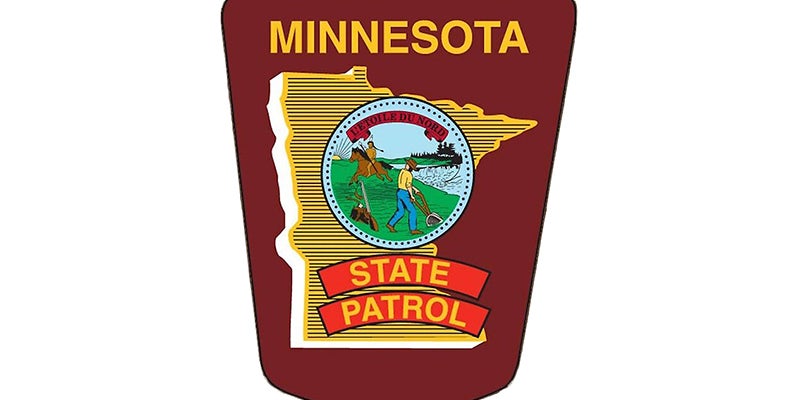Nature Notes: Flight of the monarchs
Published 6:30 am Wednesday, September 2, 2020
|
Getting your Trinity Audio player ready...
|
By Sydney Weisinger
Teacher/Naturalist
Summer is always filled with the familiar sights of orange and black wings floating past you in the sky. These familiar colors belong to the monarch butterflies. Every year at the Jay C. Hormel Nature Center, we teach about, collect, and tag monarch caterpillars and butterflies. The first class we offer focuses on the life cycle of Mmonarchs and helping the students find a caterpillar of their own to take home and raise. The second class we offer focuses on monarch tagging.
You can find the brightly striped black, yellow and white monarch caterpillars on milkweed leaves usually starting mid-end of June. This year we noticed a slow start to the monarch caterpillar population, but it has picked up as the summer has gone on. We think this had to do with a smaller number of milkweed production and a slower start to the growing season for milkweed this year.
Monarchs need milkweed plants to attach their eggs to and it is the monarch caterpillar’s only source of food. Since milkweed has toxic properties, when the caterpillar consumes it, it is able to take on the toxic properties itself! A caterpillar will consume 20-30 milkweed leaves and increase their weight by 3,000 times before they’re fully grown. Another fun fact, that either grosses out or totally amazes the kids that care for monarch caterpillars every summer is that caterpillars molt their skin five times and will actually turn around and eat it afterwards!
The molt is actually a very nutrient rich treat for them. The caterpillar will then go into a chrysalis, not a cocoon because it does not have a silken covering. There the body of the caterpillar will break down and change into a liquid before reforming into the organs and wings of a butterfly. The whole egg to butterfly life cycle takes anywhere from 21-31 days before emerging as a monarch butterfly.
Once the monarch butterfly emerges, it goes on a feeding frenzy of nectar from flowers. Right now they are loving the colors purple and yellow (one of our students pointed out that they must be Vikings fans!). Plants such as blazing star, thistle, and goldenrod provide a good late season source of nectar for migrating monarch butterflies.
Typically a monarch butterfly will live for about two to five weeks and reproduce during that time. If they emerge after about Aug. 15, they will live eight to nine months to survive migration and their overwinter sites in Mexico. During this time period they enter a physiological state called “reproductive diapause” or arrested development to put a pause on reproduction. They will not lay eggs or mate until this ends in late winter or early spring.
At the Nature Center we participate in tagging monarch butterflies. The purpose of tagging is to figure out where the monarchs were originally tagged and where they ended up. This can also help researchers determine the pathways taken by migrating monarchs. Researchers have also been able to study weather patterns and weather events in conjunction with recovered monarch tags to determine the effects weather has on migrating populations.
Monarch tagging has been essential for researchers to study the population numbers of monarch butterflies. Research has found that there has been a decline of monarch butterflies over the past 10 years. They think this is due to deforestation in their overwintering sites in Mexico, loss of habitat in summer locations, and weather conditions or events. Fortunately, in the last two years the numbers have been increasing. Scientists think this has to do with favorable weather conditions and increase in education of the general population, which has helped increase the habitat for milkweed.
Even with a slower start to the milkweed growing season and caterpillar production this summer, it is looking like it is going to be a great tagging season. Hopefully this will mean more monarchs will complete their migration to Mexico and we will have more monarchs making their way back to us in the spring. So far we have tagged almost 200 monarchs in two weeks!
Honey harvest
Honey should be on sale by the third week of September, check our Facebook, Instagram, and website for updates.
September Schedule
Sept. 5: Halloween Warm-up Tickets go on sale at Jim’s SuperFresh; 1:30-4:30 p.m. – Friends Members Only Free Monarch Tagging Class
Sept. 7: Interpretive Center Closed for Labor Day
Sept. 12: 9-11 a.m.; 9-11 p.m. – Sola Fide Observatory – By RSVP only, check our website for more information.
Sept. 23: 3:30-5 p.m. – Volunteer Work Party, Monarch Tagging – Must RSVP
Sept. 26: Last day for canoe/kayak rental; 8-10 p.m. , Sola Fide Observatory, By RSVP only, check our website for more information.
Oct. 3: 8-10 p.m., Sola Fide Observatory. By RSVP only, check our website for more information.




